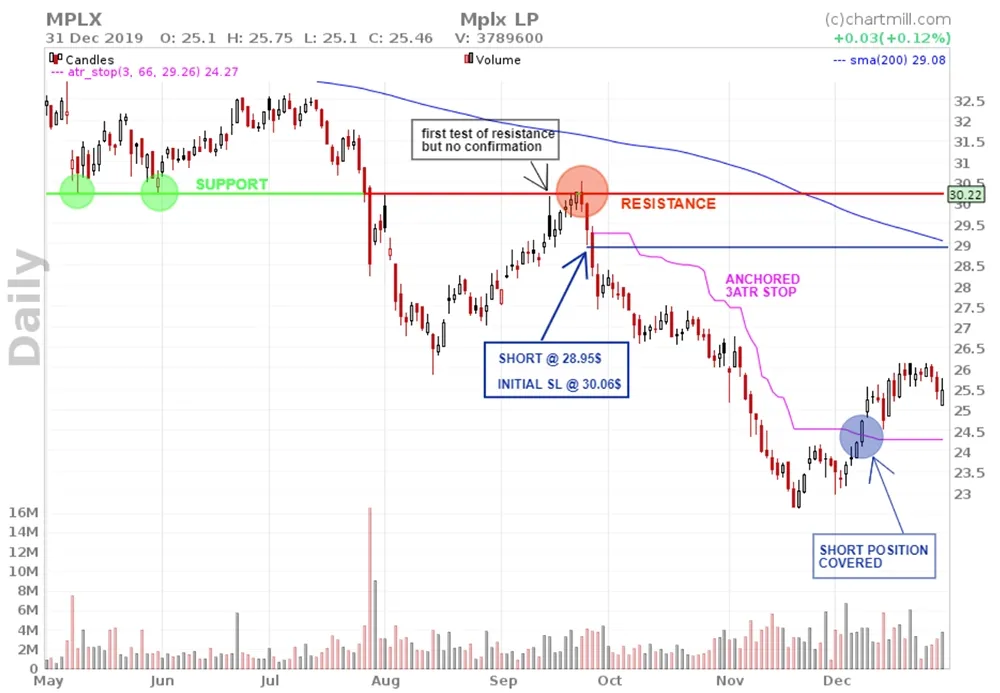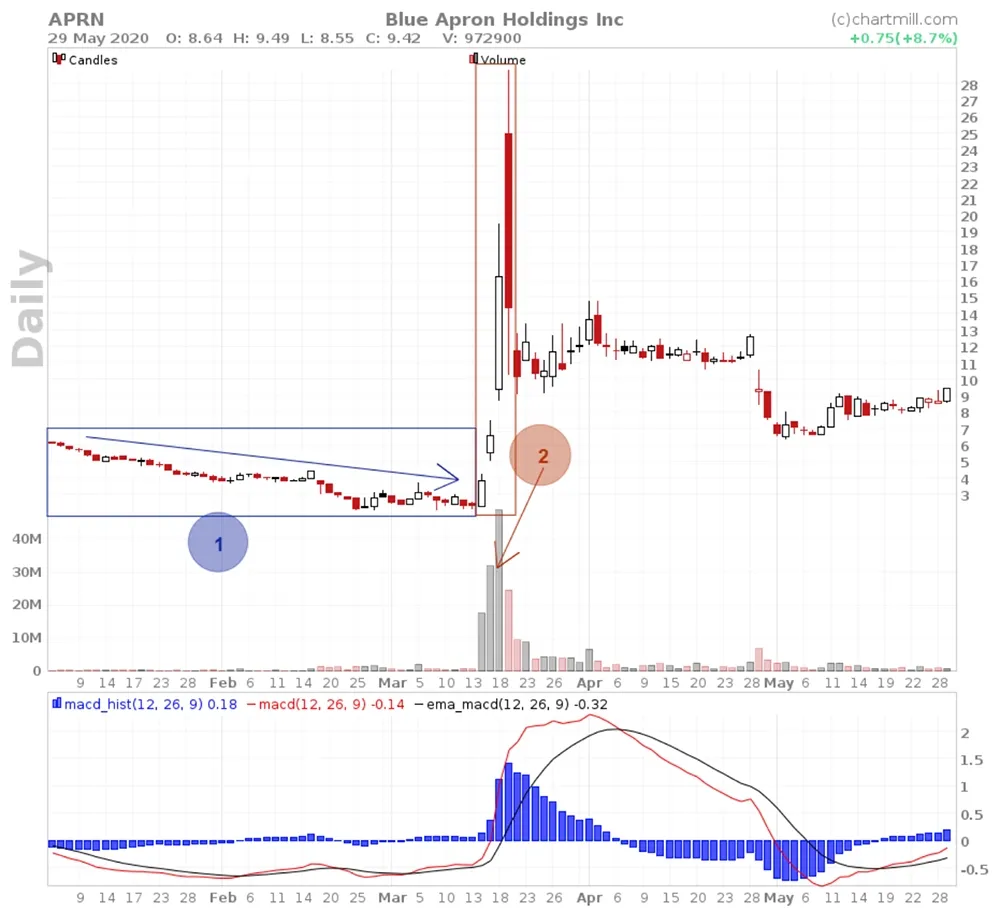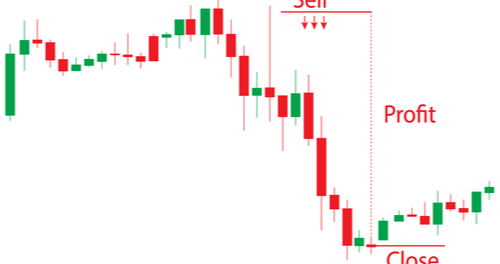What is Short Selling
By Kristoff De Turck - reviewed by Aldwin Keppens
Last update: Apr 19, 2024
Briefly explained, 'shorting' is a way of trading in which the trader sells shares of a company he does not own and speculates on a further down movement. In order to sell (or go short) shares that one does not have, those shares will first have to be borrowed through the broker. Subsequently, the trader sells these borrowed shares on the stock exchange and receives money for it. Of course, the borrowed shares will have to be bought back one day. If the share price continues to drop, the trader will need less money to buy back his shares, the difference between the initial selling amount and the eventual lower buying amount is the profit the trader has made.
An example to make things clear.
Suppose trader X expects the stock price of company 'Z' to drop in the near future, for example because trader X expects bad quarterly results for company 'Z'. The share price of company 'Z' quotes at 50$ and trader X borrows through his broker 100 shares which he sells at market price to trader 'Y' for a total amount of 5000$ (100*50$).
Trader X has thus received $5,000 on his trading account and is now 100 shares of company 'Z' short. The prediction of trader X seems to be correct, the company 'Z' announces worse than expected operating results and the share price drops from $50 to $30 in just a few days. Trader X then decides to close his short position and buy back 100 shares of company 'Z' at market price. So he pays 3000$ (100*30$). This gives trader X a profit of $2,000 (excluding commissions and any other costs) as he received $5,000 at the initial sale of the shares and bought them back for only $3,000.
But suppose that trader X was wrong and, for example, the company's results turned out to be much better than expected, causing the price to rise sharply. What happens then? Suppose, for example, that the price rose from 50$ to 60$? So the trader has to buy back his shares at a much higher price than he sold them first. That transaction will cost him $6000 because the price of the shares has risen to $60 in the meantime. In this case trader X has a loss of 1000$. He sold the shares for $5,000 but is now obliged to buy them back at $6,000...
Chart of a succesful short trade - testing price resistance level

On the daily chart, stockprice of MPLX was cleary in a downtrend (price is below the blue descending line which represents the 200SMA). Mid August price bounces back up and by the end of september the previous support around 30$ was tested for the second time. The first red candlestick out of the red circle was the confirmation candle for a short setup. In this case an anchored 3ATR stop was used to protect profits. First week of december the anchored stop was hit and the short position was closed for a nice profit.
If you would like to know more about stops that can protect your profits you can read an article via this link. There is also a video available in which we explain the use of such profit stops. Be sure to watch it!
Why shortselling stocks?
Going short on shares is interesting because it allows you, as an investor, to benefit from both rising and falling markets.
Another striking fact when shorting is the strength and speed of the movement. Rising prices can also be quite volatile at times, but this phenomenon occurs more regularly and is particularly pronounced when prices fall. The reason for this is obvious. If something goes down and keeps going down, more and more people will want to get rid of their shares faster, which reinforces the downward movement even more. Traders who go short can indeed make big profits in a short period of time.
But there are, of course, some disadvantages associated with shorting that should not be underestimated.
The biggest drawback you absolutely must take into account is the fact that, in theory, your potential loss is unlimited. If you buy 100 shares of the company 'Z' at 50$ and tomorrow the company is bankrupt then the shares are worth 0$ and you have lost your total investment, being 5000$.
However, suppose you went short and sold 100 shares of the company 'Z' at 50$. What is your maximum loss? Indeed, unlimited, because unlike a decrease that stops at 0, an increase can continue. Imagine that the 'Z' share rises to 200$. If you want to buy back your shares then you will have to pay 20.000$ while you only received 5000$ when you sold them. This phenomenon is exacerbated when many traders simultaneously want to liquidate their short positions, also known as…
The short squeeze effect.
With a short squeeze you suddenly notice that the price rises tremendously because stop-loss orders are triggered massively, precisely because most traders place them at technically relevant levels. The initial rise is usually due to an unexpected turn of events that has a strong influence on the price. For example, important positive news for the company. Unexpected positive news attracts bargain hunters, especially if the price of the company in question has been going down for a while and most investors assumed that the price would fall even further. The buyers raise the price and suddenly the price reaches the level where many automatic stop-loss orders go off. An additional disadvantage is that precisely because of the many stop-losses are at the same level, it is very likely that if your stop-loss is triggered, the actual price will be a lot worse than the used stop-loss level.
The chart below from the company Blue Apron Holdings Inc. is a classic example of such a short squeeze.

- The Blue Apron Holdings Inc. share shows a downward trend until Friday 13 March with a closing price of barely 2.28$.
- On Monday 16 March 2020 the share price rises by almost 70%. Investors are speculating heavily on the fact that the company can benefit strongly from the corona crisis. The buying volume already speaks for itself. Many traders who were short in the stock are now suddenly looking at a loss or - at best - see their accumulated profits melting like snow in the sun. The sudden rise in price is attracting even more buyers, causing even more shorts to get into trouble and get rid of their positions. The buying volume in the following days speaks for itself. What follows is a mega shortsqueeze. March 17th the price rises 71% and the following day the price even rises by almost 150%. On March 19th the highest price is reached, almost 29$. Barely 7 days earlier the price was quoted at 2.28$...
In a nutshell
Shorting shares and thus speculating on a drop in prices can be very lucrative. However, as an investor you should be aware that the potential loss can be significantly bigger than your initial investment. Always use stop-losses at market price and keep your positions small. In the case of a shortsqueeze - due to the sudden extreme volatility - you should bear in mind that the executed market price can be much worse than your set stop loss level.







